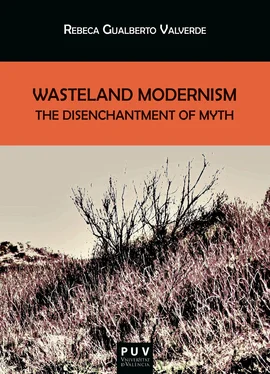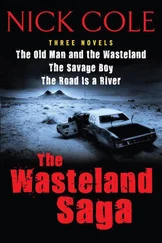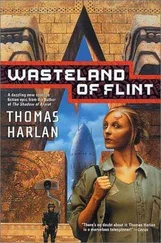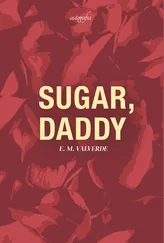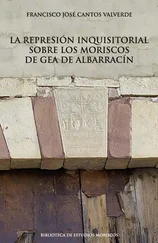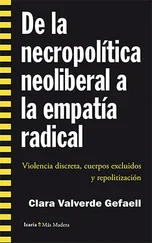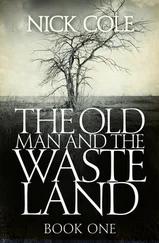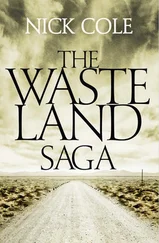II
In The Waste Land , “the thematics and imagery of the war underlie the poem at many levels, beginning with its memorial opening and encompassing its burning cities, soldier songs, shell-shocked London citizenry, ubiquitous dead, burial phobias, even the rats” (Cole 66). The possibility of regeneration seems farfetched, even when the land is physically reborn. Whereas in the medieval sources, the physical renewal of the land’s fertility brought along the restoration of peace and social welfare, the earth coming back to life in spring is an act of cruelty in the modern Waste Land. The undertone is apocalyptic: the earth regenerates and will continue to do so for the rest of eternity, but eternal life is the utmost form of cruelty for the war-ravaged, wasted world that remains:
April is the cruellest month, breeding
Lilacs out of the dead land, mixing
Memory and desire, stirring
Dull roots with spring rain.
Winter kept us warm, covering
Earth in forgetful snow, feeding
A little life with dried tubers. (1-7)
In her fundamental study on violence and modernism, Sarah Cole finds in these iconic lines “multiple valences on the way death and land conjure one another, including the vegetative structure of resurrection” (71). She writes that “the lines invoke the parched earth which nevertheless will breed, the land impregnated by dead bodies (no-man’s-land made general), and the cruel discomfort and pain of bringing blossoms out of such a soil” (71). As she claims, the beginning of the poem ties the loss and death of the Great War to the inevitable cycling of the seasons, which is poignant as far as the horror of war cannot in this way be altered or avoided (71).
For Cole, the beginning of the poem ironizes “the truism that the violence of war can be germinative” (72), which clearly undercuts the magical potency of the alleged ritual of resurrection that underscores the use of myth in the poem. In his famous 1923 review of James Joyce’s Ulysses , Eliot seemed to clearly advocate for the benefit of myth as a strategy to give order and meaning to the chaos of the contemporary world, 7 and, as some critics have argued, the use of myth in the poem may provide some sense of order—or at least the illusion of order. 8 But, in any case, the argument that primitive myth can restore order and meaning in a world wracked by chaos disregards the fact that to complete such purpose, myth has to be reshaped. It is the case in The Waste Land , a poem that “treats myth, history, art and religion as subject to the same fragmentation, appropriation, and degradation as modern life” (Davidson 123). Eliot himself critiqued Stravinsky’s Le Sacré du Printemps (1913) because it remained “a pageant of primitive culture” in which, in everything except in the music, “one missed the sense of the present” (qt. in Litz 19). The words reveal that, for Eliot, the contemporary recreation of myth requires myth to be updated and transformed to give a good account of the present.
Langbaum has argued that all the characters in The Waste Land have in common “a sense of loss and a neural itch, a restless, inchoate desire to recover what has been lost” (“Walking” 231). For Faulk, the poem makes “desperate efforts to reestablish cultural hierarchy out of anarchy by means of a perspective achieved through a poetic arrangement of disparate ‘fragments’” (36). It is the particular arrangement of the fragments that expresses the futility of such a desire for recovery, that “very minimum of restless aliveness” that propels the characters to repeat the archetypal pattern of the Grail quest (Langbaum “Walking” 231). By the time the speaker reaches the Chapel Perilous, the place is empty and poses no threat: “There is the empty chapel, only the wind’s home, / It has no windows, and the door swings, / Dry bones can harm no one” (Eliot TWL 388-90). As Lupack and Lupack explain, “with the Chapel divested of its dangers and trials, there is no chance for a hero to prove his courage and virtue, and thus to prove himself worthy of achieving the Grail—if there were a hero, that is” (117). The fragments are barely recognizable, even when the visit to the Chapel is followed by “the dry sterile thunder” (342) finally bringing down the much-awaited rain.
A different sound accompanies the rain. It is a single syllable, DA. Interpreted by the gods as meaning “damyatta” (control), by the men as “Datta” (give), and by the demons as “dayadhvam”(pity), the voice of the thunder as heard in the Upanishad , the sacred books of Hinduism, may suggest a form of redemptive knowledge acquired by the Grail Knight at the end of the quest. 9 But such knowledge, if it exists at all, is necessarily polysemic and ambivalent. It raises the problem of interpretation, what Coyle terms “overdetermination,” “liminality,” and “doubleness” (160), in his view the main characteristics of a poem that “inhabits both sides of an opposition” (160).
“What the Thunder Said” begins with the description of a desert—“Here is no water but only rock / Rock and water and the sandy road / The road winding among the mountains above / Which are mountains of rock without water” (Eliot TWL 331-4)—that is finally relieved by the rain. The hopes for regeneration seem corroborated by the presence of resurrected Christ in this fifth canto, in a vignette that recalls the story of the two men on the road to Emmaus:
Who is the third who walks always beside you?
When I count, there are only you and I together
But when I look ahead up the white road
There is always another one walking beside you
Gliding wrapt in a brown mantle, hooded
I do not know whether a man or a woman
—But who is that on the other side of you? (359-365)
These lines apparently resolve the first lines of the section, which seem to recreate the Passion, 10 poeticizing a transition from death to resurrection. Yet, as Eliot explains in a note, the lines that retell an episode from the Gospel were inspired by the narrative of an Antarctic expedition in which “it was related that the party of explorers, at the extremity of their strength, had the constant delusion that there was one more member that could actually be counted” (25). 11 Both references simultaneously embody a manifest Providence but, while Shackleton claims that they “had seen God in his caramel raptures, [and] heard the text that Nature renders [and] (…) reached the naked soul of man” (226), Eliot characterizes such apparition as “a constant delusion,” doubling the meaning of a reference that simultaneously signifies redemption and exhaustion. In this regard, the debilitated stream of consciousness of the speaker before the apparition is highly eloquent:
If there was water
And not rock
If there were rock
And also water
And water
A spring
To pool among the rock
If there were the sound of water only
Not the cicada
And dry grass signing. (Eliot TWL 346-54)
The faltering rhythm of these short lines, the inconsistent discourse, and the frequent repetitions recall a nearly-exhausted state of consciousness, which resignifies the apparition of Christ into a hallucination suffered by the dehydrated explorers who wander the Waste Land. The doubled image points towards the inevitable failure of heroic action in The Waste Land , 12 and at the same time, negates the possibility of resurrection. If Christ’s redemptive sacrifice is a hallucination, the ritual meaning underneath the myth is emptied out of meaning. The killing of the divine king can no longer resurrect the Waste Land because, as Brooker and Bentley note, “Christ, all the heroes of fertility myth, the tradition of revering such figures, and mythic consciousness itself seem to be dead in the reverberation of spring thunder over distant mountains” (174).
Читать дальше
